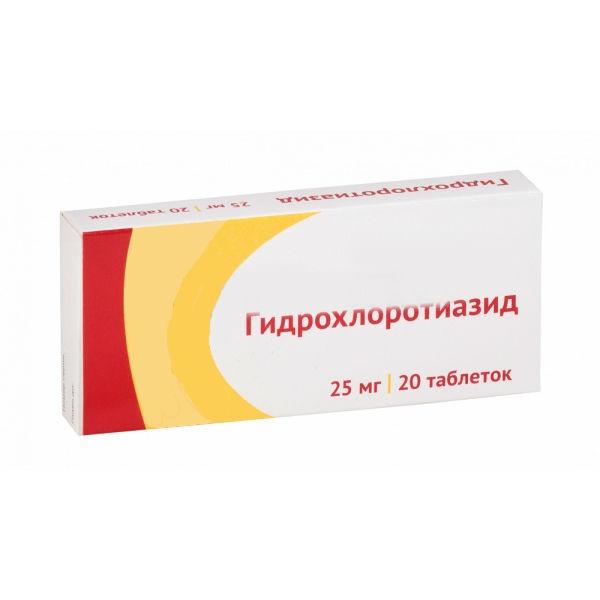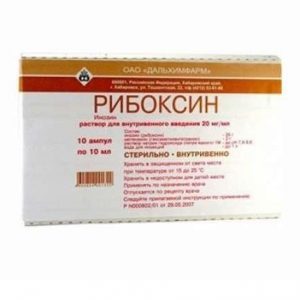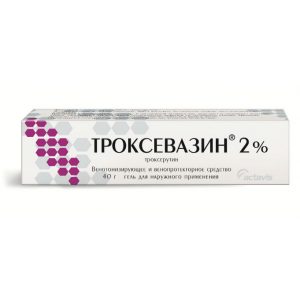Description
Release form
Tablets
Packing
20 pcs.
Pharmacological action
Hydrochlorothiazide – thiazide diuretic. It disrupts the reabsorption of sodium, chlorine and water ions in the distal tubules of the nephron. It increases the excretion of potassium, magnesium, bicarbonate ions and retains calcium ions in the body. The diuretic effect occurs after 2 hours, reaches a maximum after 4 hours and lasts up to 12 hours. It helps to reduce high blood pressure. Moreover, reduces polyuria in patients with diabetes insipidus (the mechanism of action is not fully understood). In some cases, it reduces intraocular pressure in glaucoma.
Pharmacokinetics of
After oral administration, 60-80% of the dose is absorbed from the digestive tract. The time to reach Cmax in the plasma is 1.5-3 hours. Hydrochlorothiazide accumulates in red blood cells. In the elimination phase, its concentration in red blood cells is 3 9 times greater than in plasma. Binding to plasma proteins – 40-70%. Vd in the terminal phase of excretion is 3-6 l / kg (which is equivalent to 210-420 l with a body weight of 70 kg).
Hydrochlorothiazide is metabolized to a very small extent. Its only trace trace metabolite is 2-amino-4-chloro-M-benzendisulfonamide.
The elimination of hydrochlorothiazide from plasma is biphasic: T1 / 2 in the initial phase is 2 hours, in the terminal phase – about 10 hours. In patients with normal renal function, excretion is carried out almost exclusively by the kidneys. In general, 50-75% of an oral dose is excreted unchanged in the urine.
In elderly patients and with impaired renal function, the clearance of hydrochlorothiazide is significantly reduced, which leads to a significant increase in its concentration in blood plasma. The decrease in clearance observed in elderly patients is apparently associated with a deterioration in renal function. In patients with cirrhosis of the liver, no pharmacokinetics of hydrochlorothiazide are observed.
Contraindications
Hypersensitivity (including to other sulfonamides), anuria, severe renal (creatinine Cl – less than 30 ml / min) or liver failure, difficult to control diabetes, Addison’s disease, gout, children (up to 3 years) .
Use during pregnancy and lactation
Breast-feeding should be discontinued during treatment.
Special instructions
Use with caution in patients with gout and diabetes.
In patients with renal failure, systematic monitoring of plasma concentrations of electrolytes and CC is necessary.
When signs of potassium deficiency appear, as well as with the simultaneous use of cardiac glycosides, GCS and ACTH, the use of potassium or potassium-sparing diuretics is indicated.
For prolonged use, a potassium rich diet should be followed.
The simultaneous use of diuretics with NSAIDs is not recommended.
Composition
1 tablet contains:
Active ingredient: hydrochlorothiazide 25 mg
Excipients: lactose monohydrate, povidone, cellulose, corn starch, magnesium stearate.
Dosage and administration
Install individually. A single dose is 25-50 mg, a daily dose is 25-100 mg. The frequency of administration depends on the patient’s testimony and response to treatment.
Side effects
Electrolyte imbalance
Hypokalemia, hypomagnesemia, hypercalcemia and hypochloremic alkalosis: dry mouth, thirst, irregular heart rhythm, changes in mood or psyche, muscle cramps and pain, nausea, vomiting, unusual tiredness or weakness. Hypochloremic alkalosis can cause hepatic encephalopathy or hepatic coma.
Hyponatremia: confusion, convulsions, lethargy, slowing of the thinking process, fatigue, irritability, muscle cramps.
Metabolic events: hyperglycemia, glucosuria, hyperuricemia with the development of an attack of gout. Thiazide treatment may decrease glucose tolerance, and latent diabetes mellitus may manifest. When using high doses, serum lipid levels may increase.
From the gastrointestinal tract: cholecystitis or pancreatitis, cholestatic jaundice, diarrhea, sialadenitis, constipation, anorexia.
From the cardiovascular system and blood (hematopoiesis, hemostasis): arrhythmias, orthostatic hypotension, vasculitis very rarely – leukopenia, agranulocytosis, thrombocytopenia, hemolytic anemia, aplastic anemia.
From the nervous system and sensory organs: dizziness, blurry vision (temporary), headache, paresthesia.
Hypersensitivity reactions: urticaria, purpura, necrotic vasculitis, Stevens-Johnson syndrome, respiratory distress syndrome (including pneumonitis and non-cardiogenic pulmonary edema), photosensitivity, anaphylactic reactions up to shock.
Other: decreased potency, impaired renal function, interstitial nephritis.
Drug Interactions
With the simultaneous use of antihypertensive drugs, non-depolarizing muscle relaxants their effect is enhanced.
With the simultaneous use of barbiturates, diazepam, ethanol, the risk of developing orthostatic hypotension increases.
With simultaneous use with corticosteroids, there is a risk of hypokalemia, as well as orthostatic hypotension.
With simultaneous use with ACE inhibitors (including captopril, enalapril), the antihypertensive effect is enhanced.
Pronounced arterial hypotension is possible, especially after taking the first dose of hydrochlorothiazide, apparently due to hypovolemia, which leads to a transient increase in the hypotensive effect of an ACE inhibitor.
Increased risk of impaired renal function. The development of hypokalemia is not excluded.
With the simultaneous use of oral hypoglycemic drugs, their effectiveness decreases.
With the simultaneous use of calcium and / or vitamin D preparations in high doses, hypercalcemia and the risk of developing metabolic acidosis are possible due to a slowdown in urinary calcium excretion under the influence of thiazide diuretics.
When used concomitantly with allopurinol, the risk of allergic reactions increases, especially in patients with impaired renal function.
With simultaneous use with digoxin, an increased risk of developing glycoside intoxication is possible.
With simultaneous use with indomethacin, piroxicam, naproxen, phenylbutazone, a slight decrease in the hypotensive effect is possible.
With simultaneous use with irbesartan, the development of an additive hypotensive effect is possible.
With simultaneous use with carbamazepine, there are reports of the development of hyponatremia.
With simultaneous use with colestipol, colestyramine, the absorption and diuretic effect of hydrochlorothiazide are reduced.
When used simultaneously with lithium carbonate, it is possible to increase the concentration of lithium salts in the blood to a toxic level.
When used simultaneously with orlistat, the effectiveness of hydrochlorothiazide decreases, which can lead to a significant increase in blood pressure and the development of a hypertensive crisis.
With simultaneous use with sotalol, hypokalemia and the development of ventricular arrhythmias such as pirouette are possible.
Storage Conditions
In a dark place at a temperature not exceeding 25 ° C. In a sealed package.
Term hodnosty
3 years
Active ingredient
Hydrochlorothiazide
lekarstvennaja form
tablets
Ozon, Russia




